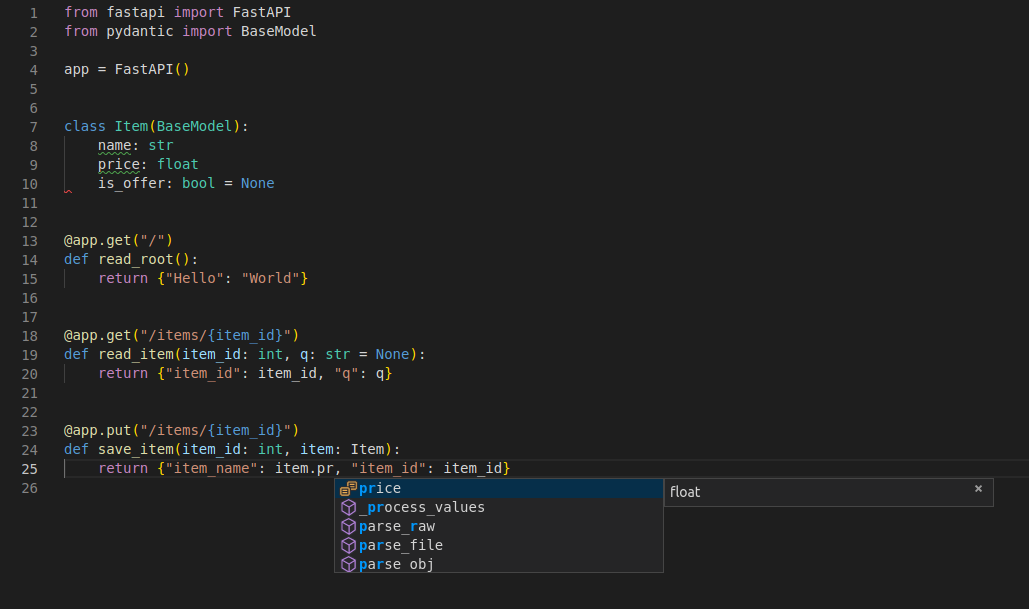- Sort Score
- Result 10 results
- Languages All
Results 1 - 9 of 9 for stdio (0.05 sec)
-
docs/en/docs/tutorial/debugging.md
# Debugging { #debugging } You can connect the debugger in your editor, for example with Visual Studio Code or PyCharm. ## Call `uvicorn` { #call-uvicorn } In your FastAPI application, import and run `uvicorn` directly: {* ../../docs_src/debugging/tutorial001.py hl[1,15] *} ### About `__name__ == "__main__"` { #about-name-main } The main purpose of the `__name__ == "__main__"` is to have some code that is executed when your file is called with:Registered: Sun Sep 07 07:19:17 UTC 2025 - Last Modified: Sun Aug 31 09:15:41 UTC 2025 - 2.5K bytes - Viewed (0) -
android-test/src/androidTest/README.md
$ echo "no" | avdmanager --verbose create avd --force --name "pixel5" --device "pixel" --package "system-images;android-29;google_apis;x86" --tag "google_apis" --abi "x86" ``` 2. Run an Emulator using Android Studio or from command line. ``` $ emulator -no-window -no-snapshot-load @pixel5 ``` 2. Turn on logs with logcat ```
Registered: Fri Sep 05 11:42:10 UTC 2025 - Last Modified: Fri Aug 22 08:12:58 UTC 2025 - 2.5K bytes - Viewed (0) -
docs/en/docs/tutorial/body.md
There were even some changes to Pydantic itself to support this. The previous screenshots were taken with <a href="https://code.visualstudio.com" class="external-link" target="_blank">Visual Studio Code</a>. But you would get the same editor support with <a href="https://www.jetbrains.com/pycharm/" class="external-link" target="_blank">PyCharm</a> and most of the other Python editors:
Registered: Sun Sep 07 07:19:17 UTC 2025 - Last Modified: Sun Aug 31 10:58:56 UTC 2025 - 7.1K bytes - Viewed (0) -
docs/en/docs/features.md
You will rarely need to come back to the docs. Here's how your editor might help you: * in <a href="https://code.visualstudio.com/" class="external-link" target="_blank">Visual Studio Code</a>:  * in <a href="https://www.jetbrains.com/pycharm/" class="external-link" target="_blank">PyCharm</a>:
Registered: Sun Sep 07 07:19:17 UTC 2025 - Last Modified: Sun Aug 31 09:15:41 UTC 2025 - 9.5K bytes - Viewed (0) -
docs/en/data/external_links.yml
https://www.linkedin.com/in/mnrozhkov/ link: https://www.evidentlyai.com/blog/fastapi-tutorial title: ML serving and monitoring with FastAPI and Evidently - author: Visual Studio Code Team author_link: https://code.visualstudio.com/ link: https://code.visualstudio.com/docs/python/tutorial-fastapi title: FastAPI Tutorial in Visual Studio Code - author: Apitally author_link: https://apitally.io link: https://blog.apitally.io/fastapi-application-monitoring-made-easy title: FastAPI application monitoring...
Registered: Sun Sep 07 07:19:17 UTC 2025 - Last Modified: Sun Aug 31 10:49:48 UTC 2025 - 23K bytes - Viewed (0) -
docs/ja/docs/tutorial/body.md
これは偶然ではなく、このデザインに基づいてフレームワークが作られています。 全てのエディターで機能することを確認するために、実装前の設計時に徹底的にテストしました。 これをサポートするためにPydantic自体にもいくつかの変更がありました。 上記のスクリーンショットは<a href="https://code.visualstudio.com" class="external-link" target="_blank">Visual Studio Code</a>を撮ったものです。 しかし、<a href="https://www.jetbrains.com/pycharm/" class="external-link" target="_blank">PyCharm</a>やほとんどのPythonエディタでも同様なエディターサポートを受けられます: <img src="/img/tutorial/body/image05.png"> /// tip | 豆知識
Registered: Sun Sep 07 07:19:17 UTC 2025 - Last Modified: Sat Jul 26 10:48:11 UTC 2025 - 7.8K bytes - Viewed (0) -
.teamcity/performance-test-durations.json
"durations" : [ { "testProject" : "largeAndroidBuild", "linux" : 469 } ] }, { "scenario" : "org.gradle.performance.regression.android.RealLifeAndroidStudioPerformanceTest.run Android Studio sync", "durations" : [ { "testProject" : "largeAndroidBuild", "linux" : 765 }, { "testProject" : "nowInAndroidBuild", "linux" : 1515 }, {
Registered: Wed Sep 10 11:36:15 UTC 2025 - Last Modified: Mon Sep 08 06:58:31 UTC 2025 - 25.9K bytes - Viewed (0) -
docs/debugging/xl-meta/main.go
Registered: Sun Sep 07 19:28:11 UTC 2025 - Last Modified: Fri Aug 29 02:39:48 UTC 2025 - 40.3K bytes - Viewed (0) -
RELEASE.md
* **Windows users:** Officially-released `tensorflow` Pip packages are now built with Visual Studio 2019 version 16.4 in order to take advantage of the new `/d2ReducedOptimizeHugeFunctions` compiler flag. To use these new packages, you must install "Microsoft Visual C++ Redistributable for Visual Studio 2015, 2017 and 2019", available from Microsoft's websiteRegistered: Tue Sep 09 12:39:10 UTC 2025 - Last Modified: Mon Aug 18 20:54:38 UTC 2025 - 740K bytes - Viewed (2)